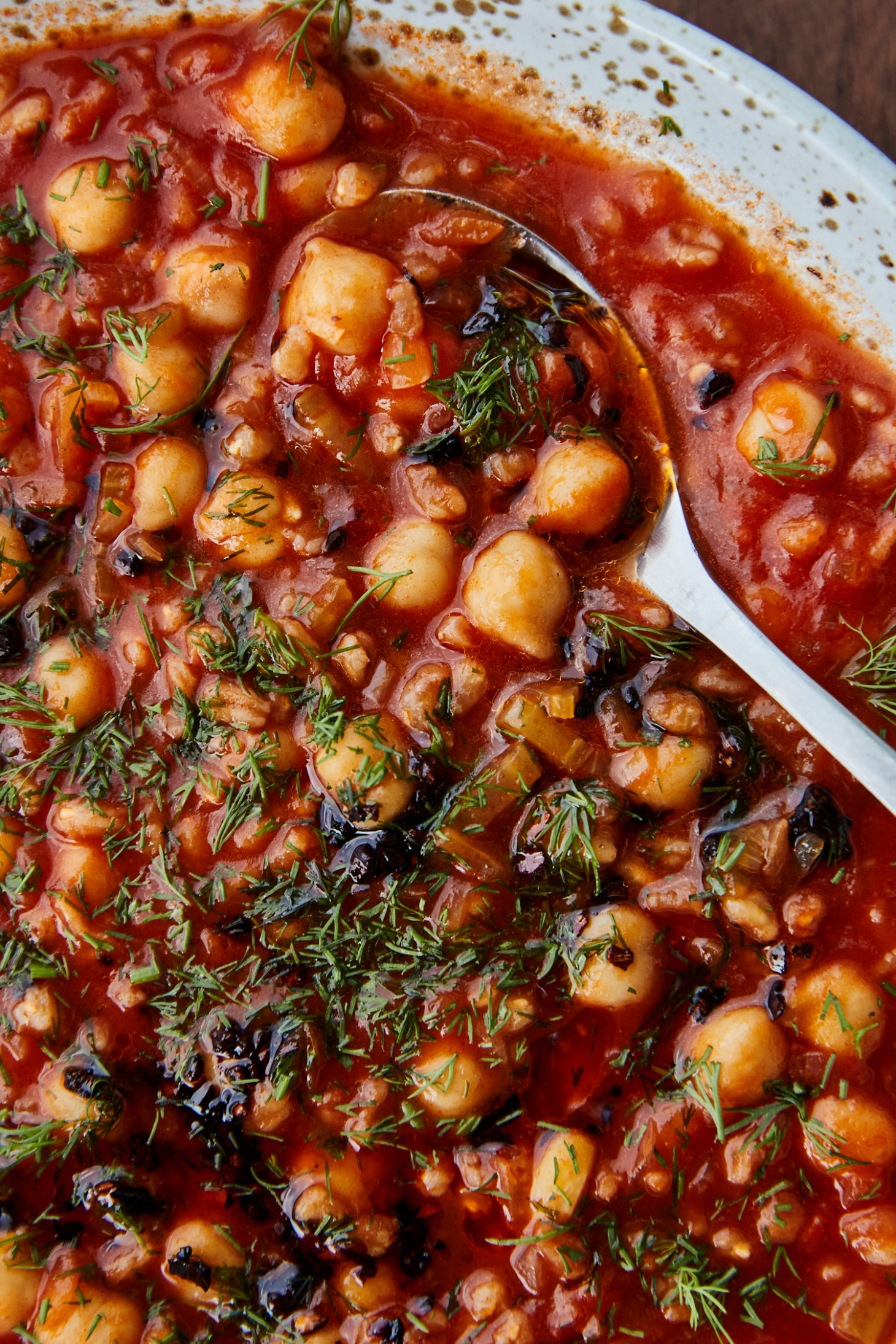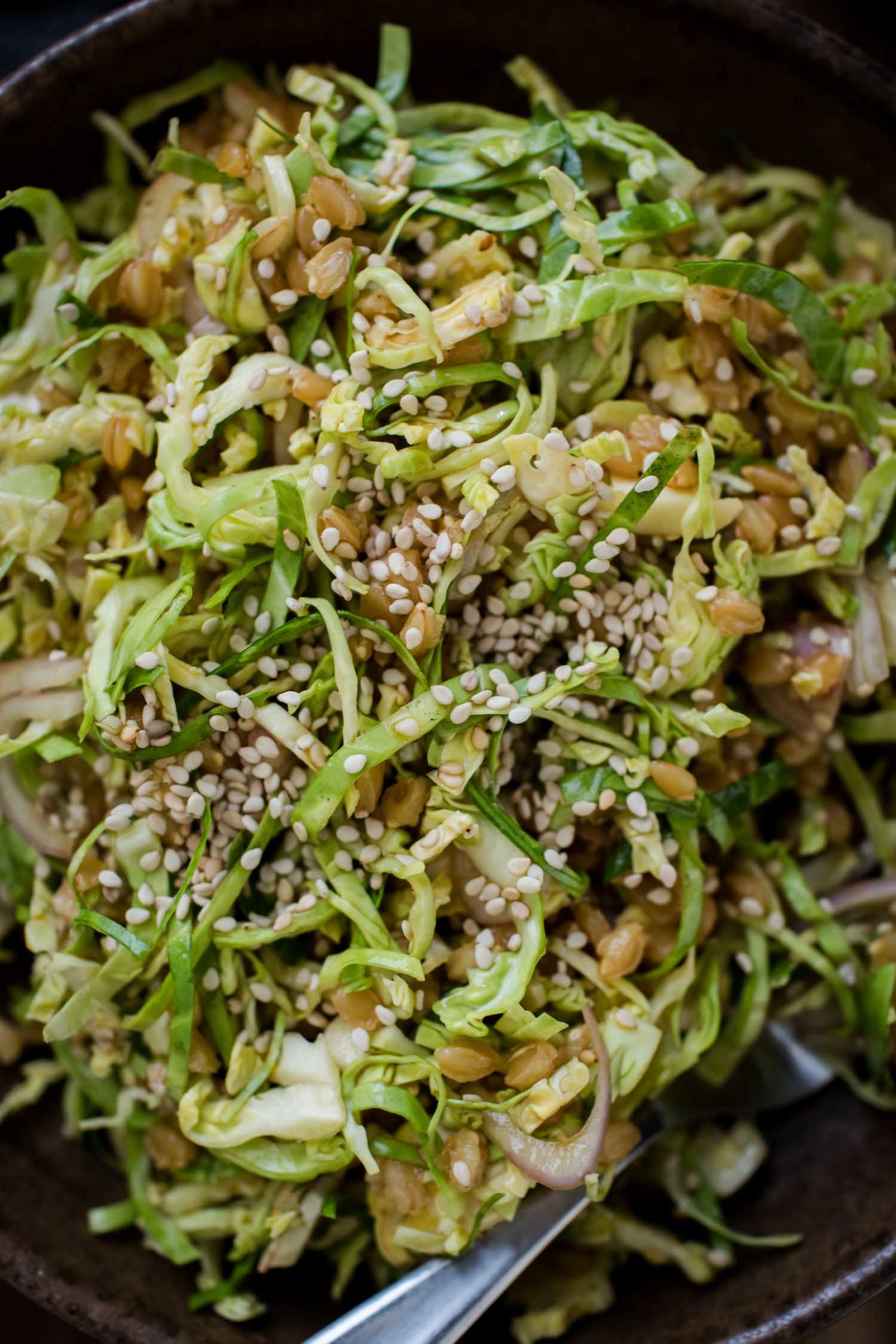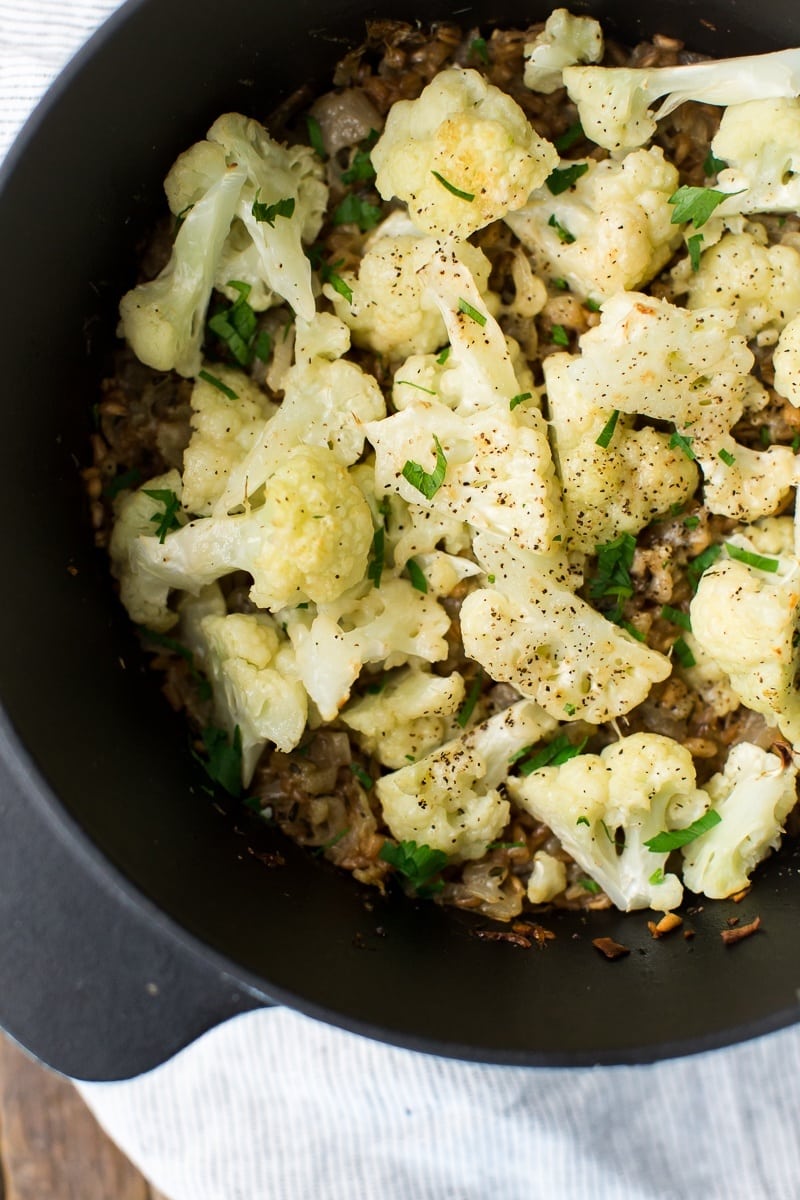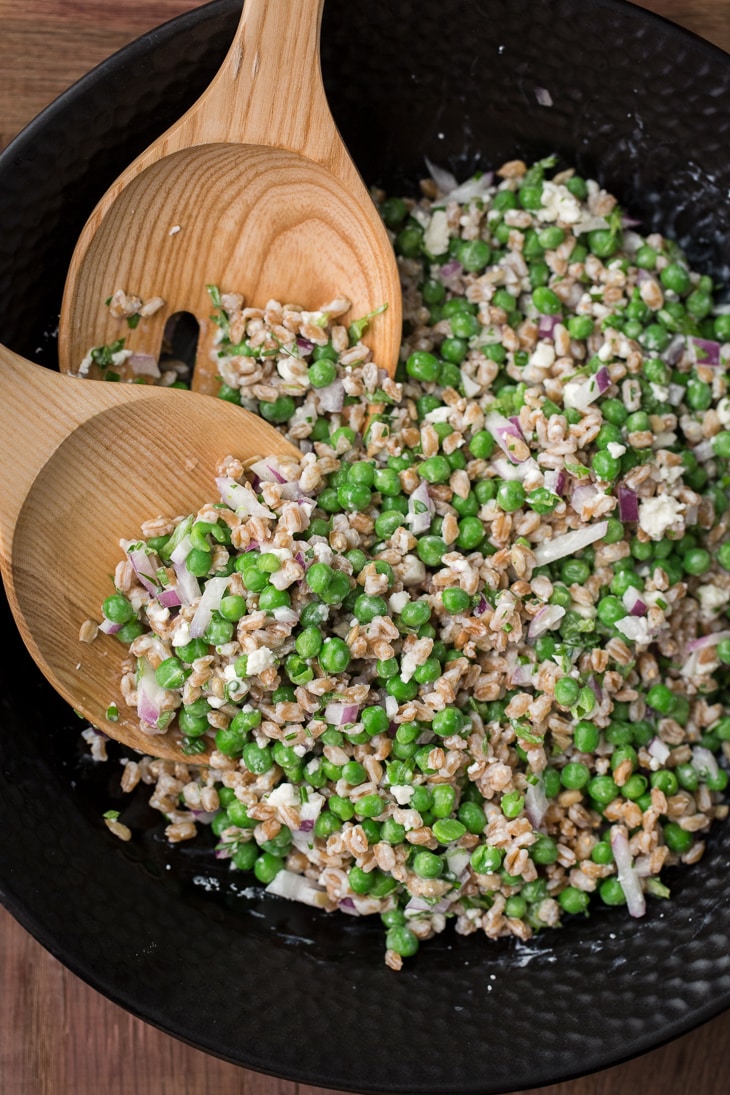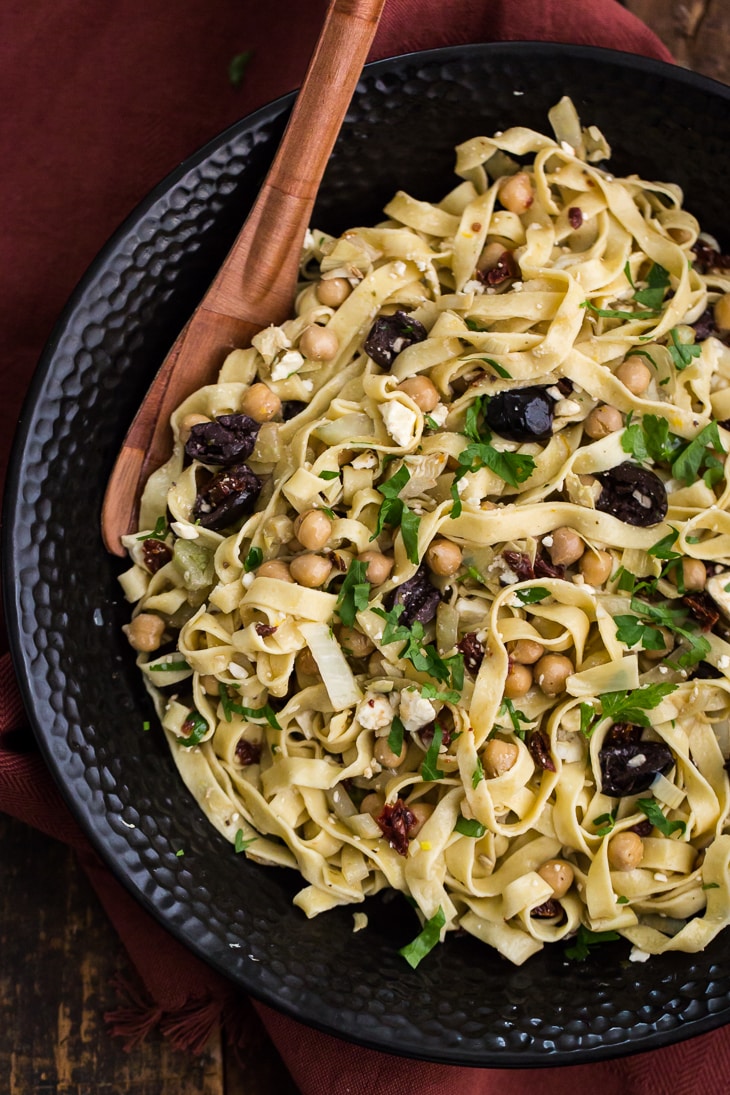
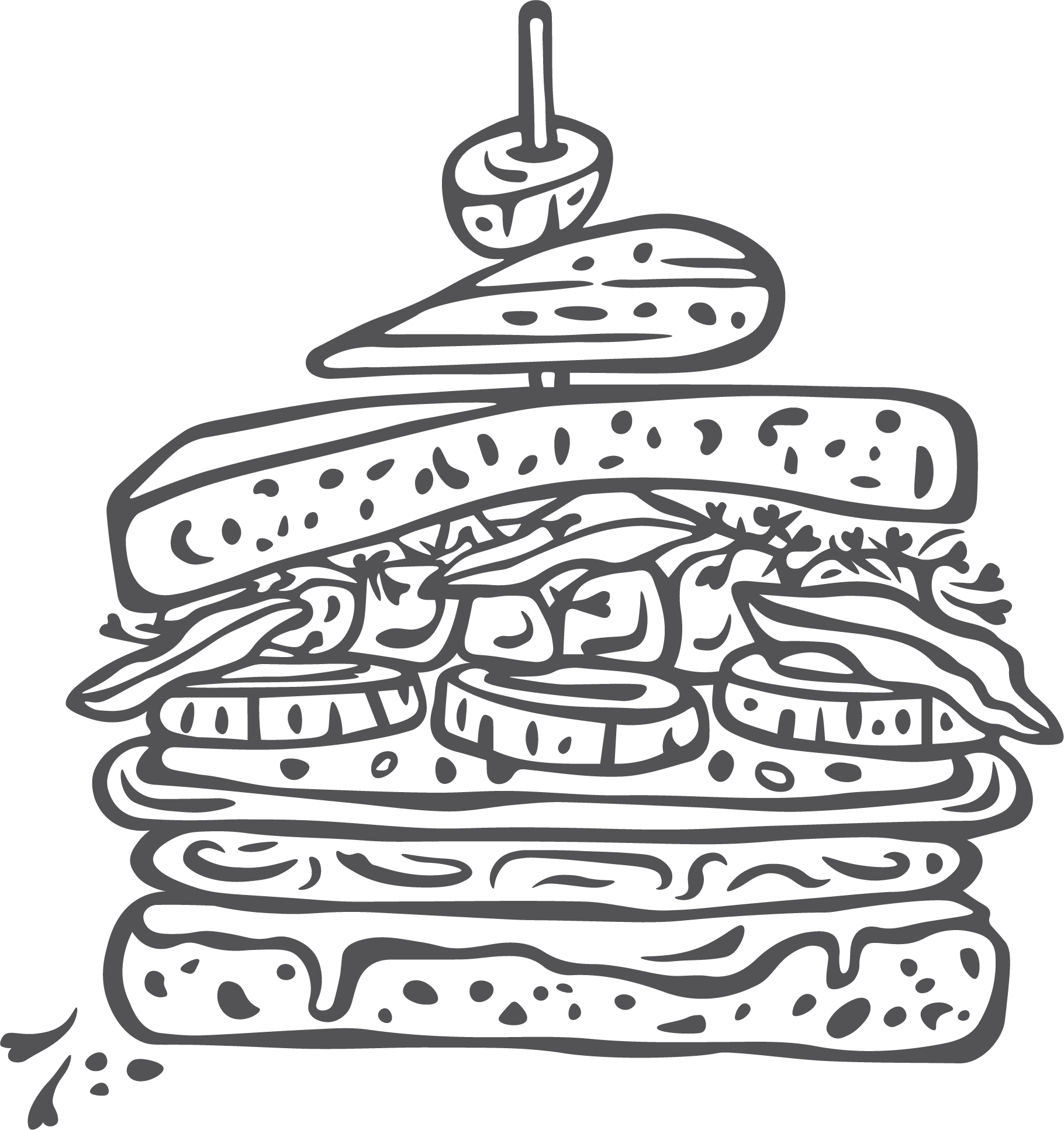
The journey of wheat into our lives is an extensive and fascinating one, dating back and documented upwards of 20,000 years. Today's wheat directly descends from the wheat our ancestors ate thousands of years ago.
Wheat is the world's second-most-produced cereal grain, with corn taking the top spot. The all-purpose flour found in most stores, while many of the wheat humans consume, is a small part of the wheat family. This family of grass grains is extensive and an absolute joy to explore.
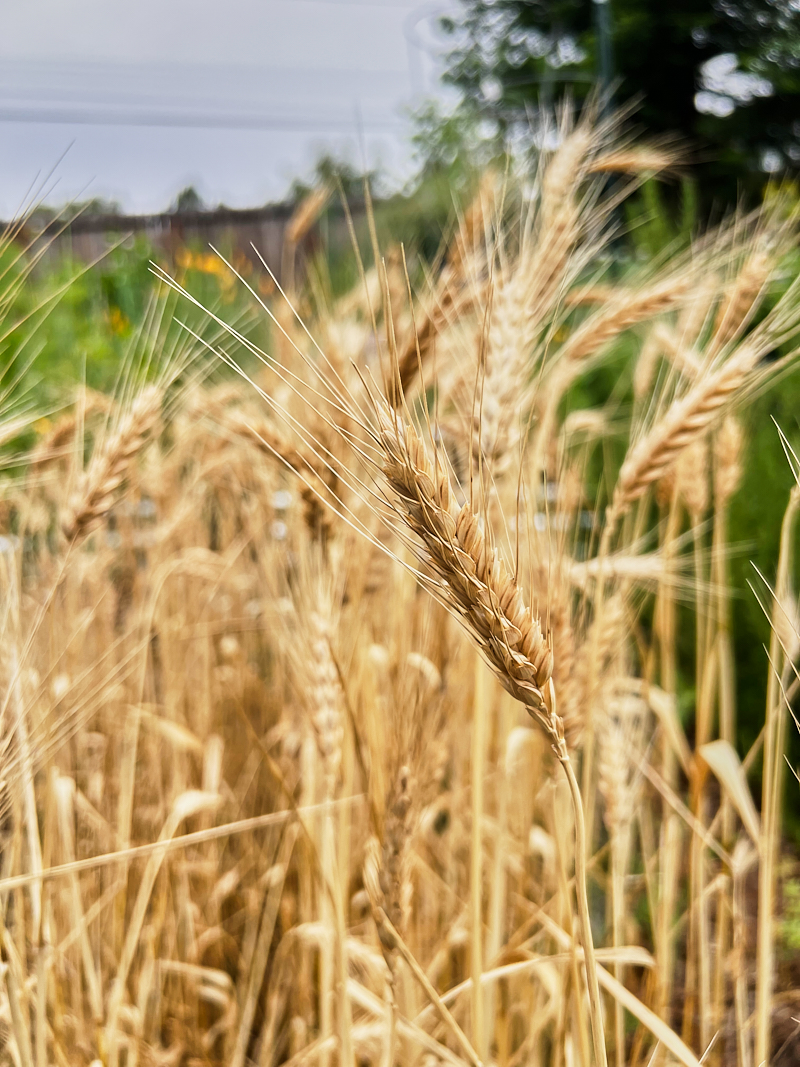
While today the term' ancient grains' is synonymous as a marketing term, there is a reason for the label! Ancient grains refer to a subset of grasses that have remained largely unchanged over the thousands of years since they were domesticated.
Those humans found wild grasses and, through careful selection, could produce reliable seeds year in and year out. While these early grains were not the easiest to harvest, persistence paid off because these wheat were the foundation for the common wheat we use today.
Three main wheat grains fall into the ancient grain category.
Einkorn is the smallest and earliest known domesticated wheat grown in the fertile crescent. Today's einkorn is a direct descendant of a wild einkorn variety. This wheat has a mild, slightly grassy flavor.
Emmer, also called farro, is a medium-sized grain derived from a naturally occurring cross of wild einkorn and an unknown variety of goat grass, producing wild emmer. This middle-of-the-roadmiddle-of-the-road wheat has a more pronounced grassy flavor.
Spelt is a larger grain thought to be another naturally occurring cross between domesticated emmer and the goat grass Aegilops tauschii. The largest of the wheat varieties, spelt, has more nutty undertones than the other two ancient wheats.
As the story goes with domestication, humans continued to refine and domesticate these ancient wheats. Many researchers believe that common wheat originated in a similar way to spelt or as a direct result of spelt through a hybridization of emmer and the goatgrass, aegilops tauschii.
Researchers believe humans originally domesticated Durum wheat from wild emmer and later derived it from domesticated emmer.
The most notable difference in modern wheat, however, is the husk. Unlike their predecessors, common (T. aestivum) and durum wheat (T. durum) focused on wheat with free-threshing ears on a firm stalk, allowing the wheat to stay upright and easily be harvested.
Therefore, the distinction is often between hulled grains (einnkorn, emmer, and spelt) and free-threshing grains (common and durum wheat). Over 25,000 varieties of common wheat are suited for different climates and growing conditions.
This domesticated wheat until the early 20th century is known as heritage or landrace wheat, varieties grown with little interference. My preference when sourcing wheat is to focus on these varieties.
In the mid-1900s, scientists introduced the first chemical fertilizers, known as the green revolution. These fertilizers drove higher yields but the landrace varieties couldn't sustain the more abundant amount of seeds and as such, wheat went through a large change to create shorter (dwarf) plants with tougher stalks that could hold the increased production.
This revolution's goal was to stave off large amounts of starvation by producing more food at a cheaper rate (and potentially combat communism in the process). However, these modern wheat varieties changed how grains are grown and farmed. These drastically altered grains were (and still are) bad for the soil's health and are more susceptible to diseases, pests, drought, and the like, which often require a large amount of agrochemicals to combat.
While the cycle can be hard to break, a growing number of farmers are returning to ancient and landrace (pre-modern hybridization) wheat varieties for soil and plant health so that generations to come can enjoy these tiny, nutritious seeds.
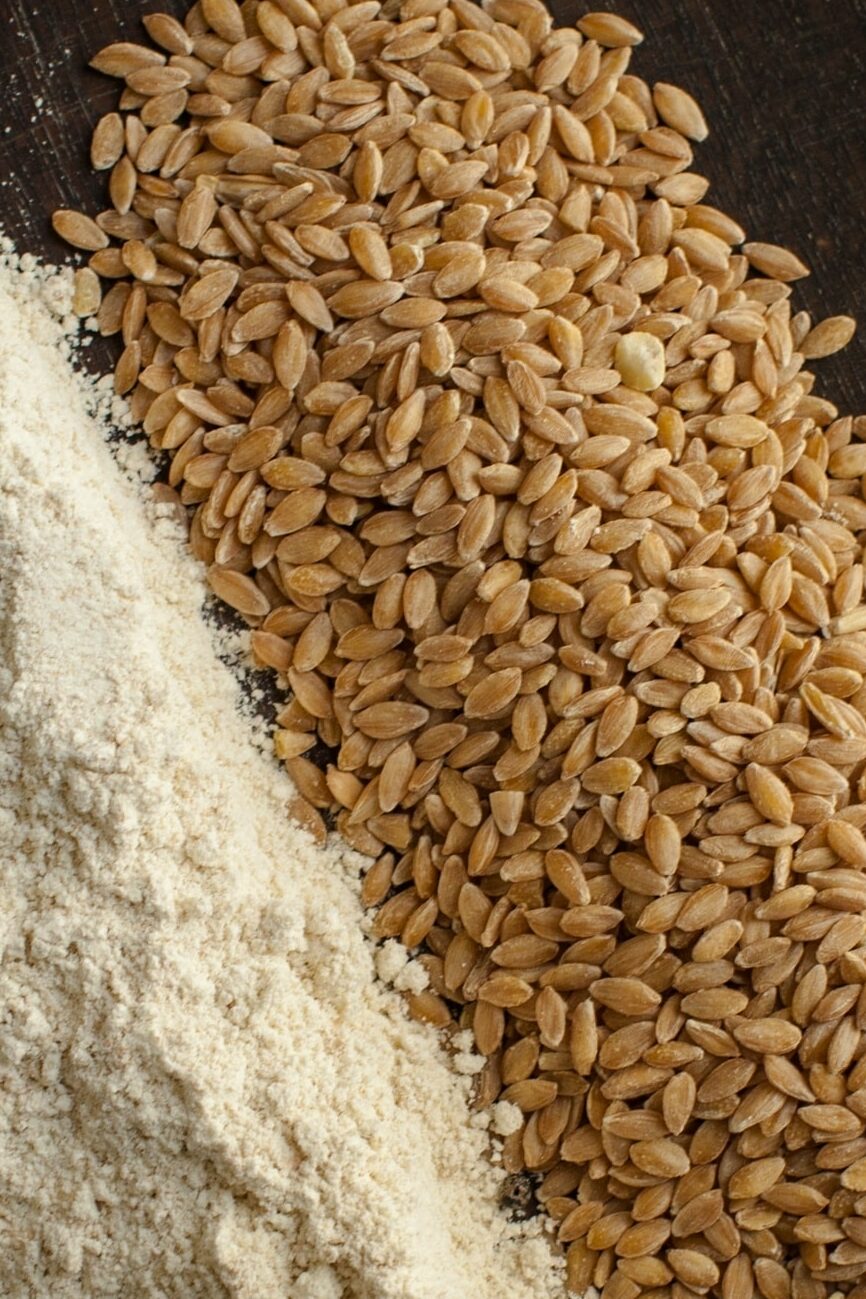
Common wheat, both landrace and modern, are classified by three characteristics.
Hardness refers to how hard or soft the endosperm of a wheat berry is due to the presence of two proteins, known as the friable protein complex. These particular proteins act as a wedge between the starch and proteins in the endosperm, allowing for a higher degree of softening.
A wheat with higher overall protein (11-15%) but exhibiting lower softening effects is best for strong gluten development. Upon milling, the starches fragment due to a tighter bond with the proteins. This fragmentation allows for more water absorption and better development of the gluten network–a must for bread making.
Wheat, often lower in overall protein (5-9%), exhibits higher softening and less fragmentation in the starches. This means less water absorption and, with a lower overall protein amount, less ability to develop the gluten network. These wheats are better suited for pastries, biscuits, and items that do not require strong gluten development.
These are at the opposite ends of the spectrum, and many types of wheat can fall somewhere in between. Many farmers and flour mills include this information on their bag labels.
If you look closely enough at grains of wheat, you might notice a small color variation among varieties. Wheat is identified as white or red based on the color of the outer bran layer. Color is not a large factor in the gluten content but can impact the look and taste of items.
Red wheat is denoted by a deeper golden-reddish color. Due to tannins found within the bran layer, varieties in this color category are often slightly more bitter than white varieties.
White wheat is red wheat bred to retain nearly all its characteristics without the tannins. Without the bitterness from the tannins, white wheat has a smoother and milder flavor.
The final categorization of wheat is determined by when the grain is grown and harvested.
Wheat planted in the fall and harvested in the spring is winter wheat. These varieties need a period of dormancy, during which temperatures are below 40˚F. This wheat often has a slightly lower protein range compared to spring wheat.
Spring wheat does not require a period of rest. It is sown in spring and grown through summer. These grains can have slightly elevated protein levels, which can impact gluten development; however, this is highly dependent on the variety of wheat.
Of course, there are exceptions. Some places in California can grow spring wheat varieties throughout winter because of mild temperatures.
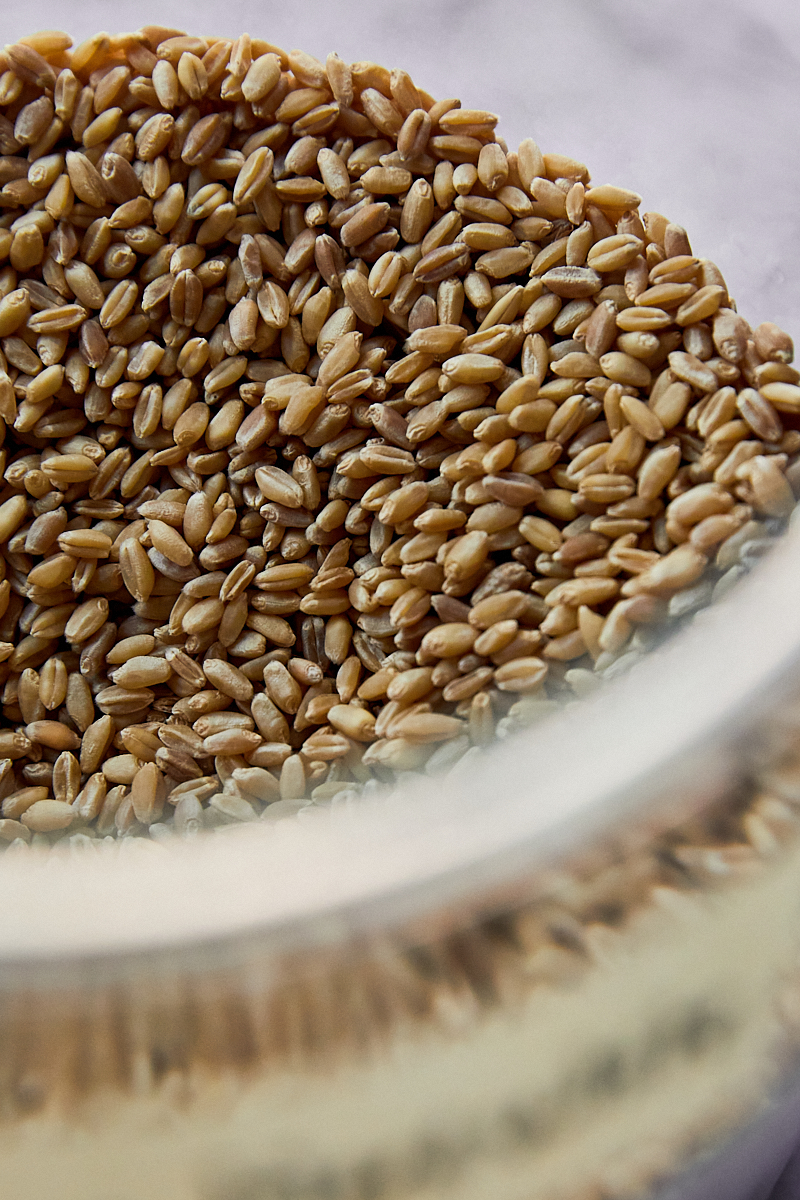
Wheat comes in a few pantry-friendly forms, including:
Given that most wheat consumed by humans is in flour form, it's helpful to understand the flour lingo about the abovementioned terms. Each of the grain characteristics plays a role in the final flour makeup.
This is the most important number when using flour. The protein makeup of the grains includes the ever-important glutenin and gliadin proteins. Once saturated with water and kneaded, these two proteins make up the gluten network. The higher the protein percentage, the better the ability to form a solid gluten network.
However, common wheat has specific levels of glutenin and gliadin in relation to the overall protein and ratio to each other. This is important because the durum and ancient wheat all have higher protein percentages than the common wheats but do not have the same gluten network capabilities!
I like to refer to this paper, which has extensive information, including helpful charts showing the ratio amounts and the overall protein breakdown for each grain.
Ash content refers to the mineral content remaining in the milled flour. This test is typically performed by burning the flour and weighing what remains, the inorganic and mineral content. This material is often found in the bran layer, so ash also aligns with extraction.
There is a balance between the amount of minerals helpful for gluten development and the sharp edges of remaining bran that can slice through it.
Extraction is the amount of bran and germ sifted from the flour. 100% whole grain wheat flour has 100% extraction, while generic all-purpose flour has around 75% extraction.
Beyond protein levels, extraction rates are the other number to know. Working with 100% extracted whole wheat is quite different from working with 80% extracted whole wheat! I recommend playing around with different extraction amounts.
The falling number is the amount of germination found among the harvested wheat seeds. If the wheat experienced higher humidity or a later harvest, the seeds would start their germination process. Once this happens, the carbohydrates in the endosperm begin converting to sugars. This is great for a seed trying to sprout but not for bakers who want those enzymes to be present in flour!
The higher the falling number, the better the enzymatic potential. Flours with higher numbers correlate to better rise and crumb structure. For wheat, the falling number should ideally be between 300/sec and 400/sec. This sheet helps you understand the process a bit more.
Finally, some millers share the moisture content of their flour. Moisture in flour is essential for shelf stability. Flour should be below 14% moisture. Anything higher will make the flour a moldy mess at room temperature.
The average flour found in stores is either bleached or unbleached. All-purpose flour is made from a blend of hard, typically red, wheat and a soft wheat. Once milled, the flour is sifted to remove the bran and germ. Most companies hope to achieve a protein level of around 10% to 11%, creating a flour that can create a good gluten network for bread but can also work for pastry applications. Hence, the all-purpose!
A higher-protein flour made from spring or winter hard wheat. Store bread flour also has the bran and germ removed, while many of the local millers leave a portion of the bran in the mix. Bread flours are higher in protein, ranging from 12% and up. The higher protein content is needed to create the air pockets and rise we all love in bread.
On the opposite side of all-purpose, we have pastry and cake flours. Each is milled from soft wheat varieties that are low in protein. The lower protein levels mean less chance for the gluten network to form, helping to keep the dough flaky and light.
Cake flour is sifted at fine levels and often goes through a chlorination process to ensure the gluten is low and starch is in prime form for baked goods.
Durum is the flour most sought-after for pasta. It is one of the hardest wheats with high protein levels. However, unlike common wheat, durum contains slightly higher amounts of gliadins than glutenins, resulting in a dough that has good plasticity but not as good elasticity.
Finally, Einkorn, Emmer, and Spelt are available in flour form. These ancient wheats have varying grassy flavors that you can use alone or with other flours.
These three grains have differing protein levels and gluten capabilities, so they are best used with common wheat flour when making bread. Spelt is the closest property to common wheat, making it ideal for adding to bread. I prefer to use einkorn and emmer as pastry and pasta flours.
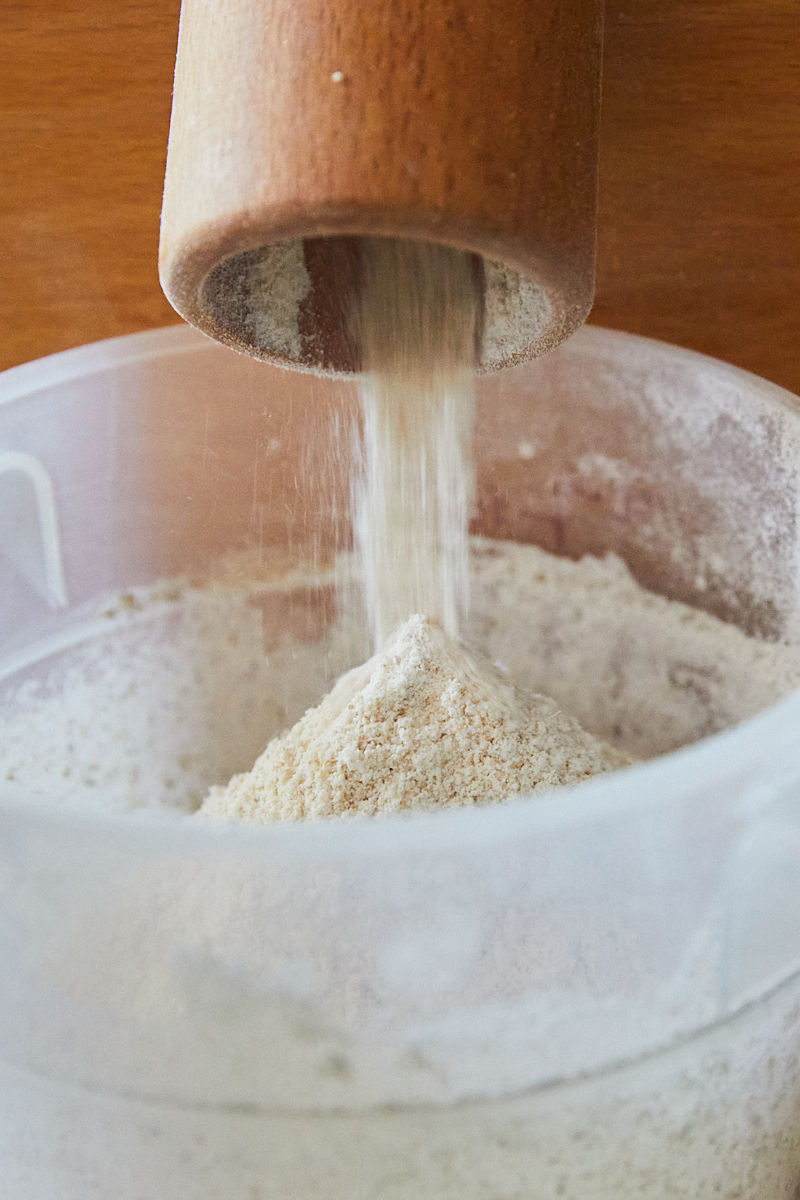
Knowing about the protein in wheat flour has important applications outside of baking. Vital wheat gluten is made by hydrating flour and kneading it to develop the gluten network. The water-soluble carbohydrates are removed through a washing process, leaving only the gluten proteins behind.
This product forms the base seitan, which often has added ingredients and is then cooked. Seitan is a delightful meat replacement in hundreds of years of culinary traditions.
Alternatively, the gluten proteins can be dehydrated and ground, creating vital wheat gluten, a great alternative to making your own seitan without having to go through the kneading and washing process yourself. Vital wheat gluten can also be used in making bread to help flours that might not have a good ability to develop a strong gluten network.
Wheat, whether whole grain or flour, is best stored in airtight containers in a cool place. When buying in larger quantities, I like to use buckets meant for long-term storage of grains.
Whole wheat can be stored in the freezer for up to a year or in the pantry for 6 months. Wheat flour is best stored in the freezer and will last up to 6 months. If the grains or flour have a rancid smell when you open the bag, toss them and buy fresh.
